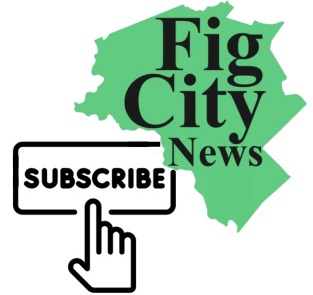I have studied Newton’s zoning since January 2020 and am concerned that the proposed Village Center Zoning is too dense, too intense, and too tall.
Village Center Zoning has only recently been connected with the Massachusetts Housing Choice Law (MBTA Communities Law), which intervenes in municipal zoning to promote multi-family housing with units suitable for families with children. It mandates Newton to define zoning that will enable the creation of 8330 units of housing units within buildings that have 3 housing units or more and that may be constructed by right with no special permits needed. There is no requirement that this housing ever be built but rather that this housing simply be enabled by zoning law.
Version 1.0 of Village Center Zoning in October 2022 did not address the MBTA Communities Law.
Version 2.0 of Village Center Zoning in April 2023 was the first version to discuss the MBTA Communities Law.
Version 3.0 of Village Center Zoning was just announced this week, and many details are not yet available.
From my reading of its details, the MBTA Communities Law implies the creation of multi-family housing in buildings with a small number of units (3-6) in an area that has only one or two family houses at present. An alternate interpretation says that apartment buildings with an unlimited number of units are fine as long as they provide apartments for families with children and as long as the buildings may be built by right. This alternate interpretation appears to be influential in guiding Version 2.0 of Village Center Zoning, which locates apartment-style housing in the VC2 and VC3 zones.
Version 2.0 of Village Center Zoning also provides a zone named MRT (Multi Residence Transit) to enable housing of 3-6 units. The zone MRT will permit 3-4 units if the house is created by new construction and will permit 3-6 units if an existing house is transformed by renovation and possible addition in the rear of the building. MRT is close in spirit to my interpretation of the MBTA Communities Law.
Version 2.0 of Village Center Zoning uses MRT in two ways:
- To provide zones around various village centers where multi-family housing will be enabled.
- To provide a “zoning bridge” between Newton Centre, Newton Highlands, and Route 9 in order to create the “large contiguous district” that is one of the requirements of the MBTA Communities Law.
In the “zoning bridge” use of MRT, MRT overlays five current zones: SR2, SR3, MR1, MR2, and MR3. This is not a mistake on the part of the Planning Department. Centre Street from Paul Street to Hyde Street has SR2 zoned lots to the west and SR3 zoned lots to the east. If this stretch of road were not overlaid by MRT, then Newton would be unable to meet the requirements of the MBTA Communities Law. There is no way to back off at least this much of MRT zoning over single-residence districts.
In a separate document, I have proposed:
- Zoning larger areas of Newton with MRT overlaying lots with current zoning (SR2, SR3, MR1, MR2, and MR3) to satisfy more of the housing needs of Newton in its residential areas rather than in its village centers.
- Zoning the village centers less intensely, with somewhat less housing than in current plans. I also recommend that in some cases VC buildings might have active uses on the upper floors such as additional active businesses and professional services.
I propose one specific area in Newton for MRT zoning: the area in the five overlapping half-mile circles around MBTA stations at Newton Centre, Newton Highlands, Eliot, Waban, and Woodland that overlays the current zones SR2, SR3, MR1, MR2, and MR3. Only the area that lies north of Route 9 is included because it is difficult for pedestrians to cross Route 9.

Other areas in Newton might also be selected, but this swath is the largest and most useful.
The huge advantage of these 5 half-mile circles is that they offer the best transit in Newton: the Riverside Green Line.
Residents of this area will ask: Why should this MRT overlay zoning be acceptable?
The author Daniel Parolek offers an answer to this with his concept of Missing Middle Housing, explained in his book by that name. His company Opticos Design promotes this concept nationally. He describes a specific recipe for zoning that integrates multi-family housing amidst single family housing in a manner that is seamless.
I have adapted Parolek’s ideas to the context of Newton and the constraints of the MBTA Communities Law to propose a more refined and subtle definition of MRT. The first step was to select from the housing options suggested by Parolek those types that allow for 3-4 housing units while meeting the constraints of the MBTA Communities Law.
The list of housing types is:
- The Traditional 2.5 Story House with Pitched Roof
- Fourplex houses
- A Pair of Stacked Duplex houses
- A Pair of Side-By-Side Duplex houses, either one in front of the other or two facing across an open courtyard
- A Courtyard Building, with 3 or 4 units
I think that Newton zoning should explicitly call attention to these housing forms as options for MRT, making the MRT zoning more ”form based” and not just ”dimension based”. This will add variety to any new construction in MRT zones.
A key problem remains: The Newton Planning Department has set the maximum footprint for MRT at 1500 SF, but this is too small for all of the housing types listed above. Only the “Traditional 2.5 Story House with Pitched Roof” can possibly fit within a footprint of 1500 SF. The other options require much more footprint, at least 3000 to 3600 SF. This makes 1500 SF a serious limitation.
A key provision of the MBTA Communities Law is:
“Housing suitable for families” means housing comprised of residential dwelling units that are not age-restricted housing, and for which there are no zoning restriction on the number of bedrooms, the size of bedrooms, or the number of occupants.
What housing do families with children need?
- A family with at least one child will require at least a 2BR unit.
- A family with at least two children of opposite sexes will require at least a 3BR unit.
- Further, families with adults who work from home may require an extra bedroom to serve as a study.
The zoning rules for families with children should encourage buildings with 2BR and 3BR units and should permit the possibility of buildings with 4BR units. The zoning rules should not promote primarily 1BR units and small 2BR units.
As explained here, a “Traditional 2.5 Story House with Pitched Roof” with a 1500 SF footprint, if limited to 3 units, may fit two 3BR units on floors 1 and 2, with a cramped 2BR or a generous 1BR on floor 3. At least two of these three units work well for families with children.
If you insist on 4 units, then floor 2 must be split into two undersized 1 BR units – a design not suitable for families with children.
The Planning Department is promoting MRT as providing 4 housing units per lot, the majority of which being suitable for families with children. This is impossible within a 1500 SF maximum footprint.
The solution is to increase the maximum footprint to 3600 SF in MRT, as Parolek recommends. The result:
- All of the housing types listed above are enabled.
- A Traditional 2.5 Story House with Pitched Roof could have two large 3BR and one large 2BR, using 1800 SF of footprint (but this would not justify the rating of 4 units per lot for MBTA Compliance).
- However, the choices of Fourplex houses and Paired Stacked Duplex houses using 3000 to 3600 SF of footprint would justify the rating of 4 units per lot for MBTA Compliance.
A member from the Planning Department remarked to me by email: “Under the current rules we know the building footprint of new two-family homes typically range between 2,000-2,500 square feet. The draft zoning allows for 1,500 square feet, which is significantly smaller. We have produced a significant amount of material on helping to visualize all of this.”
It is puzzling that the Planning Department is promoting 1500 SF as the maximum footprint in MRT, while two-family homes in Newton are currently using up to 2500 SF. Parolek’s recommendation of 3600 SF is a very reasonable footprint maximum for new construction in MRT.
In summary: If the definition of MRT is adjusted to promote the variety of housing types listed above and the maximum footprint is set at an ample 3600 SF, then new construction would fit in seamlessly in the neighborhood and be acceptable to the community.
I sincerely hope that the Zoning and Planning Committee and the Planning Dept will make these adjustments to MRT.
I also wish to propose adding a sub-zone of MRT called MRT-A (MRT with Small Apartment Buildings) to allow small apartment buildings close to transit (with no mixed-use). Such apartment buildings are currently found sprinkled in existing residential areas. I propose that MRT-A allow small apartment buildings of 4 stories in height and from 8 to 24 housing units. MRT-A should be used only within one quarter mile of a transit station.
The use of MRT and MRT-A would significantly increase the amount of housing enabled for MBTA Compliance in residential neighborhoods, thus reducing the need for such housing in village centers. This will create more balance in where housing develops in Newton.
My hope for Village Center Zoning is that the city would entirely eliminate the use of VC3 and accomplish all village-center housing needs with VC2. If that is not possible, I hope the amount of VC3 usage would be significantly lessened.
I live in Newton Corner, close to the “circle of death” — and I know that the plethora of tall buildings in Newton Corner has been a destructive presence for the neighborhood. People do not feel either comfortable or safe while walking or biking or driving in the area of the Newton Corner traffic circle. Citizens living on opposite sides of the turnpike have no natural pathways for communication. I have zero confidence that the new proposed VC zoning in Newton Corner will improve the village center. The buildings in the village center that are not yet 5 stories tall will simply be replaced by 5 story buildings. What good will this do?
I cannot undo what has been done to Newton Corner by the zealous efforts of urban renewal via business development in the 1960s through 1980s.
What I can at least hope to accomplish is to convince the city not to create more Newton Corner style village centers in other areas of Newton by insisting on too much density and too much height.
For a detailed discussion, see this web document: Thoughts on Newton Village Center Zoning Version 2 and MBTA Communities Zoning
This in-depth study of transit in Newton explains why most of Newton’s transit is inadequate for families with children: The Reality of Transit in Newton
This web document links to all documents produced by the Newton Zoning and Planning Committee and the Planning Dept since January 2020 plus additional useful links: Newton MA Zoning Documents
Richard Rasala is a retired Professor and Associate Dean for Undergraduate Education in the Khoury College of Computer Sciences at Northeastern University. He has been interested in Newton zoning since soon after his retirement in 2017. This column is a summary of his essay, MBTA Zoning and Village Center Zoning.




